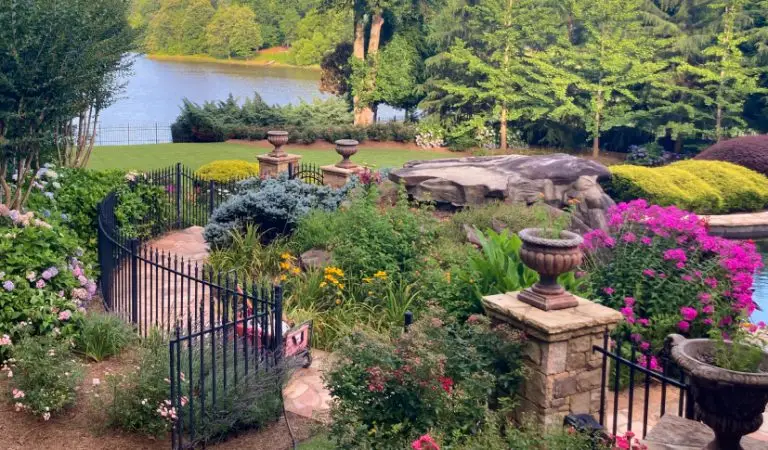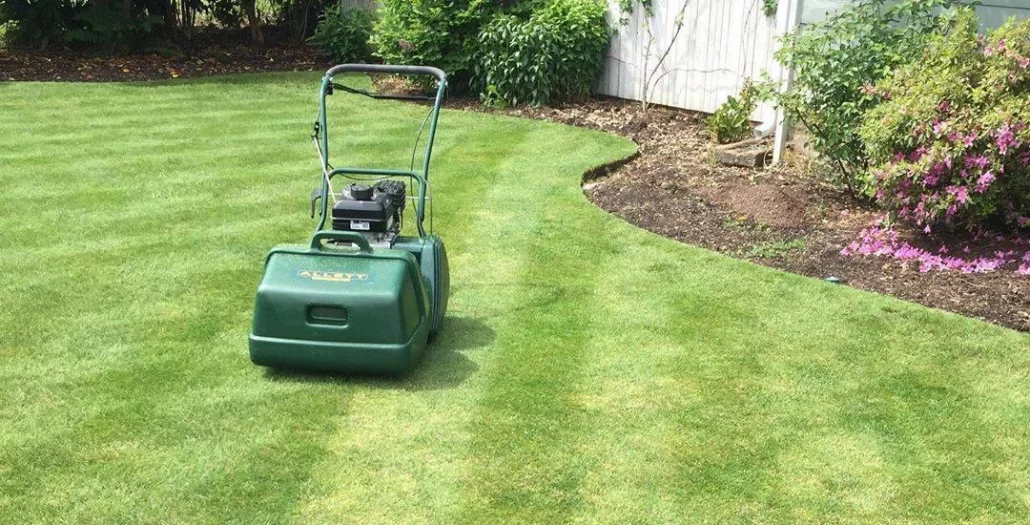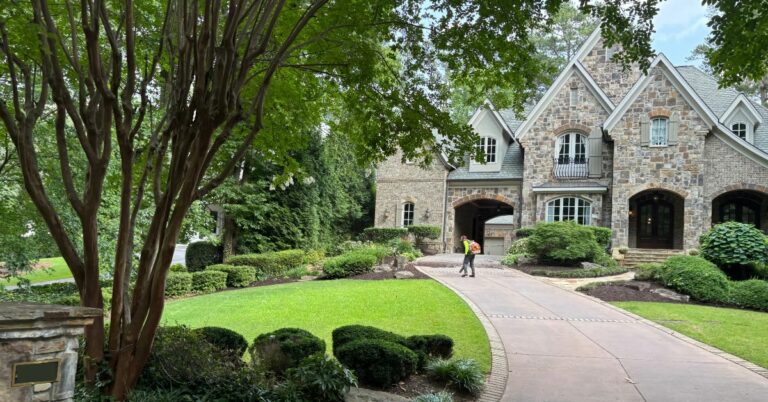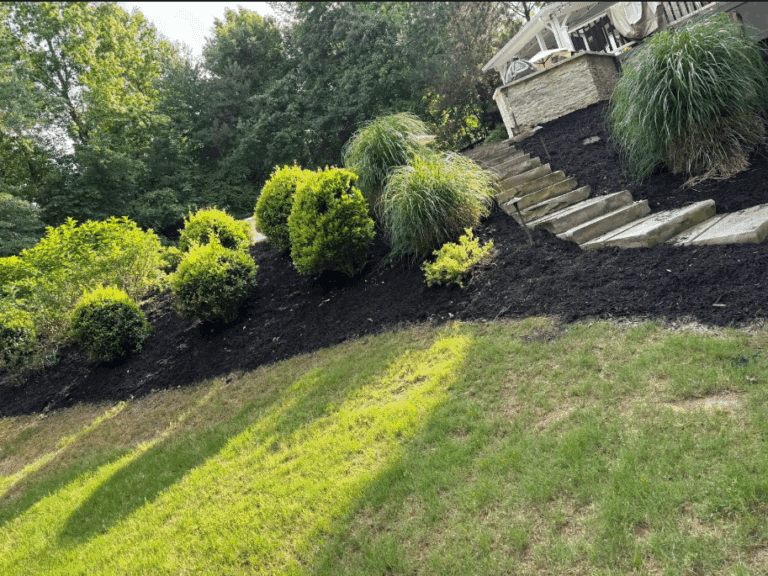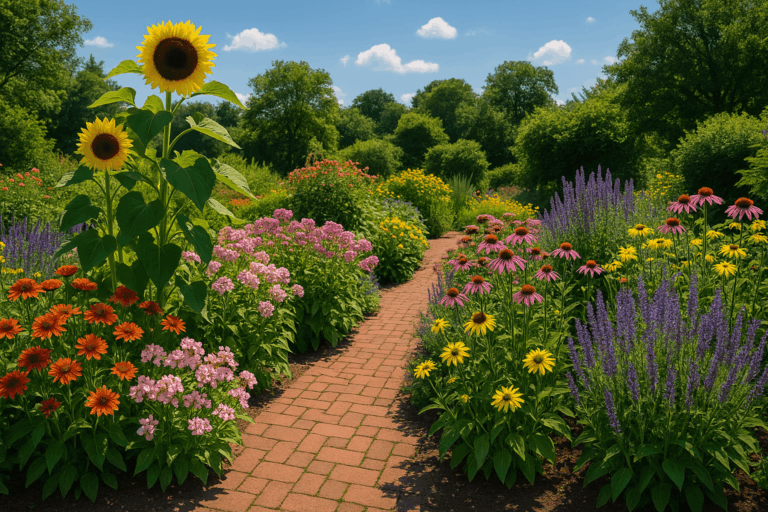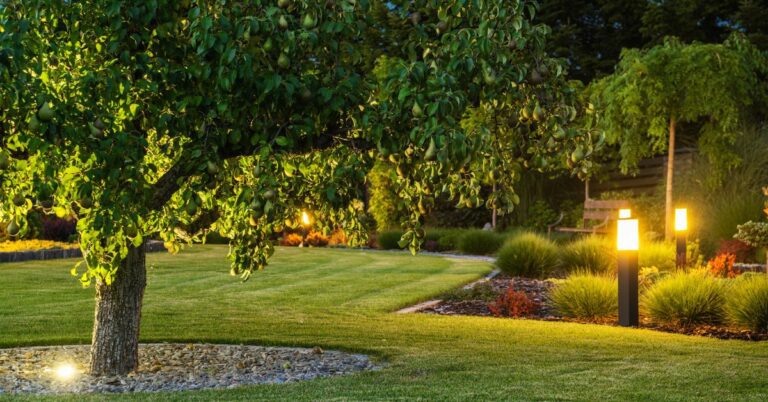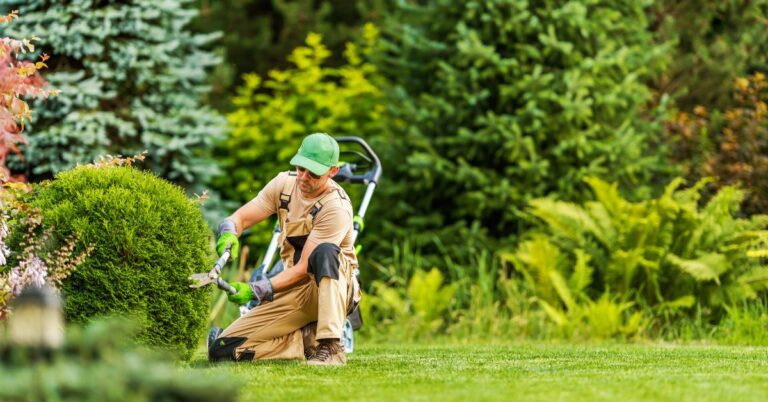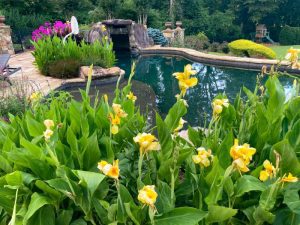Everyone loves a lush, green lawn. However, lawn fungus can strike even the most well-maintained landscapes. When that happens, your turf can develop unsightly brown or dead spots. Left untreated, lawn disease can take over your entire yard.
We’ll look at common varieties of lawn fungus in Georgia, and what you can do to control them.
What is Lawn Fungus?
A fungus is a member of a group of spore-producing organisms that feed on organic matter. Mushrooms are a familiar type of fungus, as are yeast and mold.
Lawn fungi are responsible for most lawn diseases. They eat the decaying organic matter found in grassy areas. All fungi thrive in humid conditions, which is why they commonly crop up after extended periods of rain.
Additionally, turf is more susceptible to fungi during times of stress. That’s why a regular lawn maintenance routine is so important.
Fairy Ring
What Does Fairy Ring Look Like?
- Most often seen in spring during cooler, rainy weather.
- Tan patches of diseased grass form in your lawn.
- Sometimes mushrooms grow around the outer ring, giving this fungus its deceptively charming name.
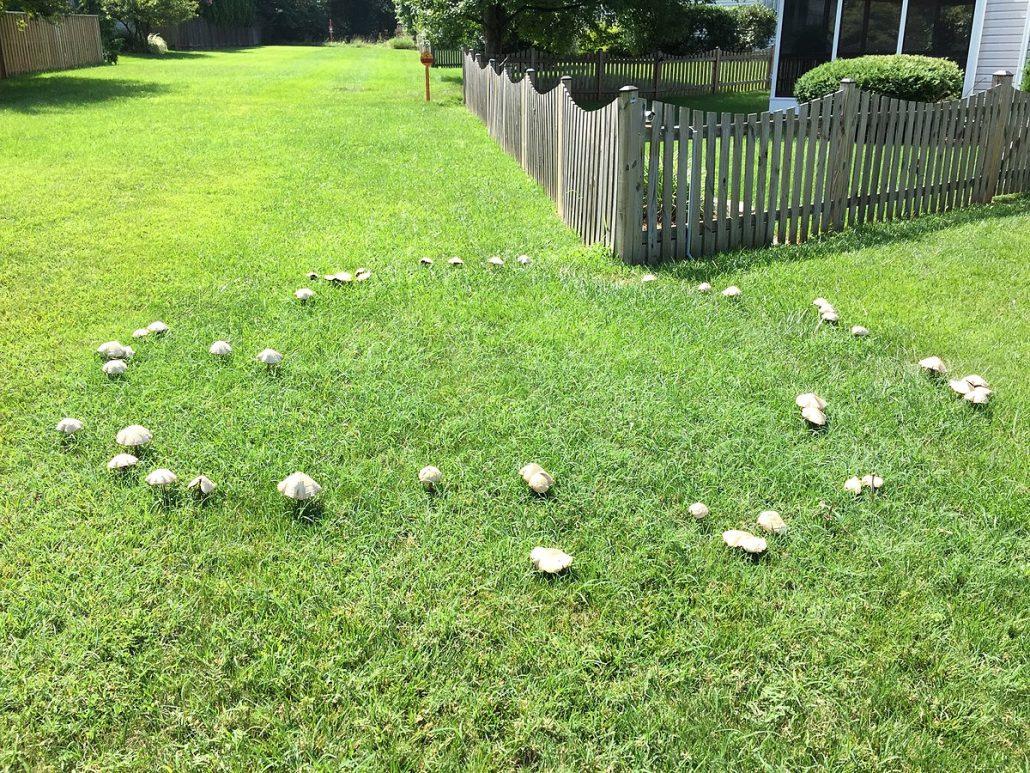
What Causes Fairy Ring?
- Fairy ring releases nitrogen, breaking down important nutrients in the soil, resulting in dead spots.
- The buildup of dead or dying organic matter provides a breeding ground for the fungus to take hold.
- On turfgrass lawns, this organic matter results in thatch. Thatch includes rhizomes, roots, and other dead plant parts that accumulate around the base of grass.
How Can I Control Fairy Ring in My Lawn?
- Scalping and dethatching will help remove the decaying organic matter where fairy ring thrives.
- Aerating helps prevent soil compaction so that your lawn can “breathe.”
- Fungicides are most effective when used on a preventative basis, starting in the spring.
- Because fairy ring stems from a problem in the soil environment, fungicides aren’t useful as a curative application.
Dollar Spot
What Does Dollar Spot Look Like?
- Appears as small circles of yellow or brown grass on your lawn.
- These circles are about the size of a silver dollar, hence the name.
- As more spots emerge, they begin to grow together, forming larger patches of diseased turf.
- Individual blades of grass will have small yellow or brown lesions surrounded by a reddish ring.
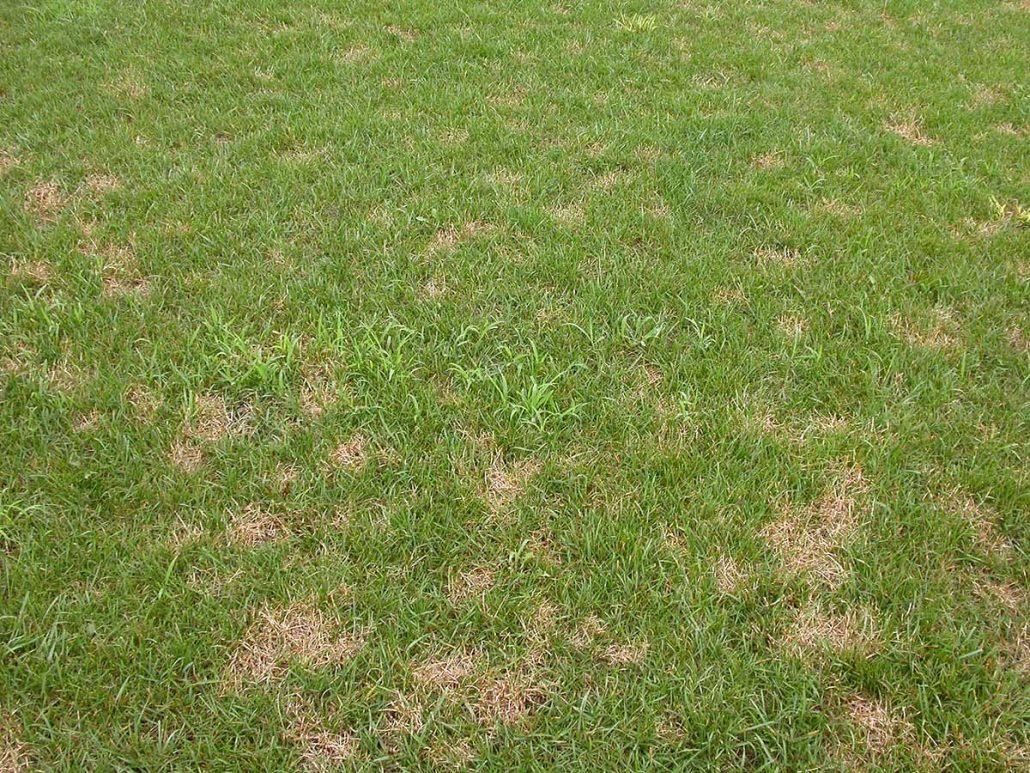
What Causes Dollar Spot?
- Dollar spot forms during wet conditions.
- It’s most common in spring and fall, when temperatures range between 60 and 75 degrees.
- Dollar spot primarily affects bermudagrass, so it’s a very common problem in the Atlanta area.
How Can I Control Dollar Spot in My Lawn?
- Proper watering and lawn maintenance is the best way to control dollar spot.
- When watering your turf, be sure to do so in the morning. This gives your grass time to dry so that it isn’t standing with water overnight.
- Fungicides containing propiconazole or fludioxonil kill dollar spot quickly, preventing it from continuing to damage your lawn.
Brown Patch
What Does Brown Patch Look Like?
- This lawn fungus shows up as circular, dead patches of grass.
- Particularly devastating to Bermudagrass lawns and cool season grasses, individual infected areas measure up to three feet in diameter.
- Areas of dead or dying grass show grayish margins.
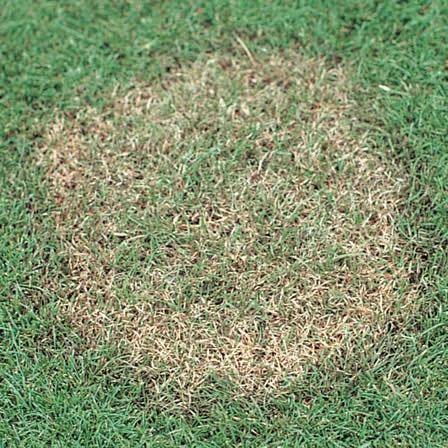
What Causes Brown Patch?
- The lawn fungus Rhizoctonia causes brown patch disease.
- It usually appears in late summer to early fall, once temperatures start cooling off.
How Can I Control Brown Patch in My Lawn?
- Proper maintenance practices can help prevent and control brown patch. This includes regular mowing, fertilization, and thatch removal.
- It’s also important to ensure your landscape is draining properly.
- If brown patch does appear, treat it with a broad-spectrum fungicide containing azoxystrobin and propiconazole.
Rust
What Does Rust Look Like?
- As the name implies, rust disease causes grass to have an orange appearance.
- Rust takes a powdery form that sticks to everything but can be brushed off rather easily.
- Rust appears in spots, or sometimes coating the entire blade.
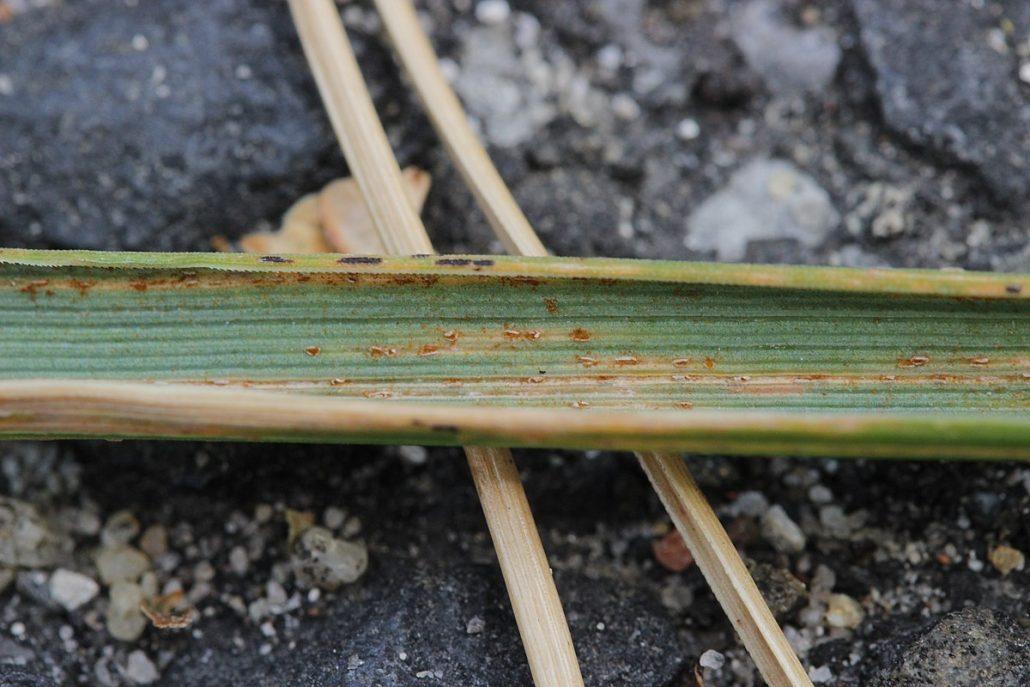
What Causes Rust Disease?
- Rust fungi are obligate parasites. That means they only grow on living plants. And while they don’t kill their hosts, they do limit growth and negatively impact health.
- 6-10 hours of consistent moisture when temperatures range between 68-86 degrees provide optimal conditions.
How Can I Control Rust in My Lawn?
- Rust most commonly affects perennial ryegrass, tall fescue, Kentucky bluegrass and zoysia.
- If you notice rust, apply a systemic lawn fungicide. This will control the existing outbreak.
- Patch any resulting bare spots and then continue with good lawncare practices such as fertilization, aeration, regular mowing, and irrigation.
Pythium Blight
What Does Pythium Blight Look Like?
- Pythium blight is sometimes referred to as “cottony blight.” That’s because the disease results in white, fluffy growth that looks like cotton candy.
- While the fungus produces a cobweb like appearance, it will feel slimy or greasy if rubbed between your fingers.
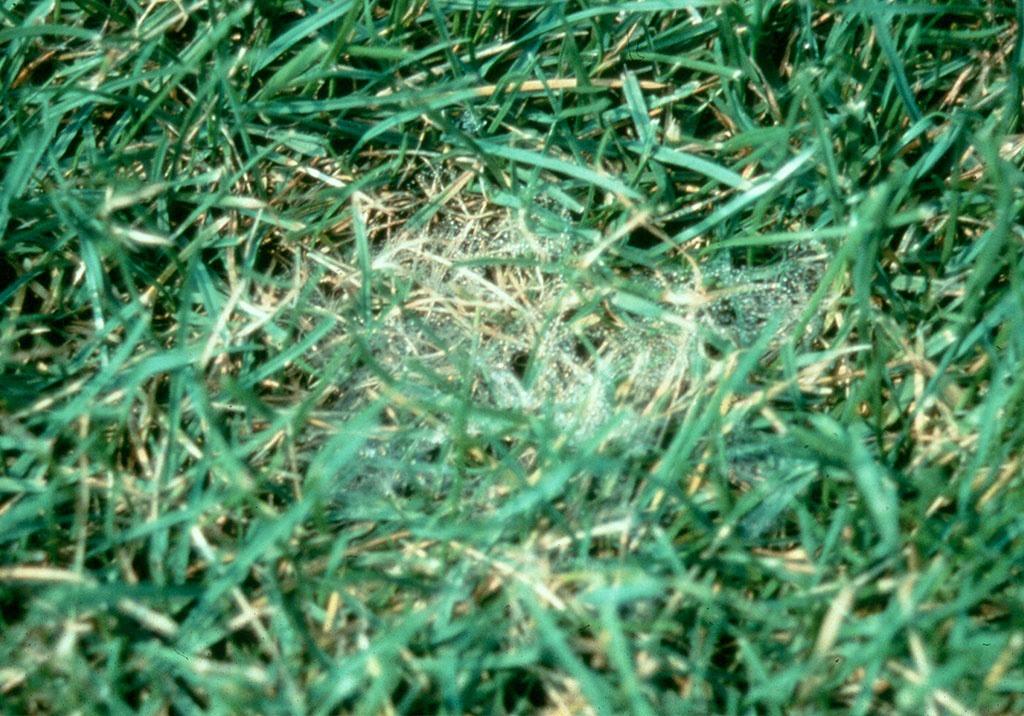
What Causes Pythium Blight?
- Frequent showers coupled with high humidity in the Atlanta area make this damp-loving fungus a common problem.
- It can also strike areas of your landscape with poor drainage conditions.
How Can I Control Pythium Blight in My Lawn?
- Prevention is the best method for keeping pythium blight out of your lawn. If you have an irrigation system, set it to water in the morning. That allows your turf to dry out in the afternoon sun.
- Similarly, ensure regular aeration and good drainage. The more air circulation your grass enjoys, the less chance pythium blight will have to take hold.
- If you notice pythium blight, apply a fungicide such as azoxystrobin or propamocarb, or contact a lawn care provider for treatment.
Red Thread
What Does Red Thread Look Like?
- This lawn fungus causes reddish, needle-like strands to extend from dying grass blades.
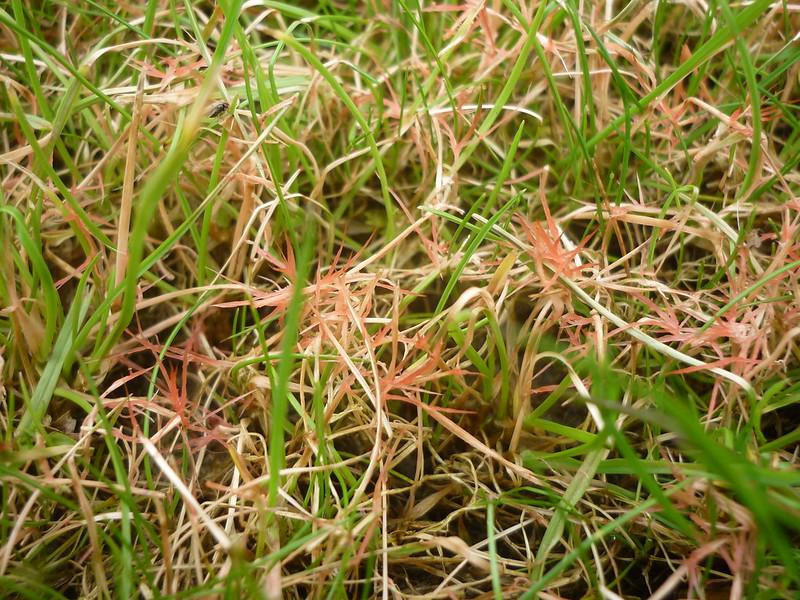
What Causes Red Thread?
- The fungus Laetisaria fuciformis causes red thread lawn disease.
- Nitrogen deficiency provides the breeding ground for this fungus to take hold.
How Can I Control Red Thread in My Lawn?
- Because undernourished lawns are more susceptible to red thread, it’s important to follow a regular lawn fertilizer protocol.
- You should also bag clippings of infected grass after mowing and reduce traffic until lawn health is restored.
- It may take several cycles of careful feeding with nitrogen fertilizer to prevent red thread from returning in the early spring.
Spring Dead Spot
What Does Spring Dead Spot Look Like?
- As the name implies, spring dead spot shows up when turf resumes growth in spring.
- Dead spots appear as circular areas 6-12 inches in diameter.
- Dark scales called sclerotia appear on affected stolons.
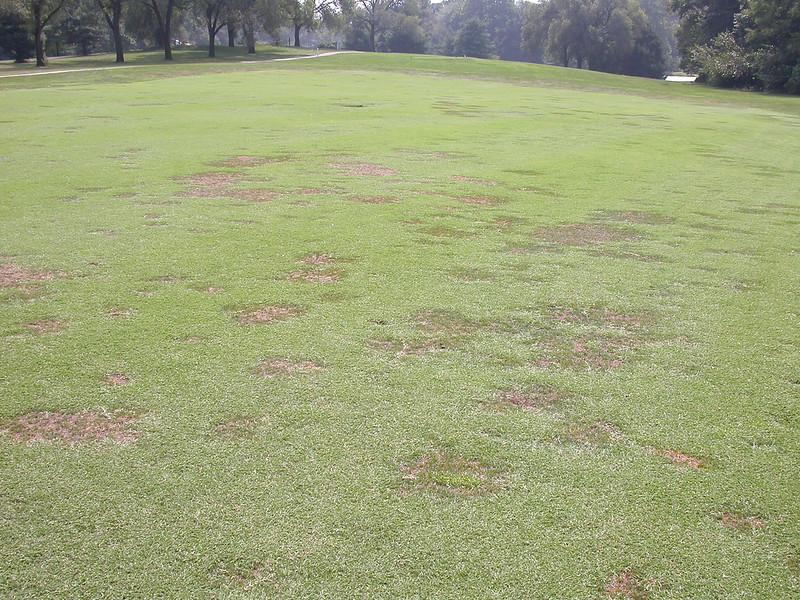
What Causes Spring Dead Spot?
- Spring dead spot is caused by the fungus Ophiosphaerella.
- These fungi damage bermudagrass roots, rhizomes and stolons by completely rotting these plant parts.
How Can I Control Spring Dead Spot in My Lawn?
- Ensure regular fertilization with nitrogen and potassium rich fertilizers.
- Control weeds in the affected area to enhance recovery.
- Improve drainage and reduce thatch via scalping and aeration.
- Because spring dead spot should be treated during the reproduction cycle in the fall, it can be difficult to find the patch after it grows in.
- Apply fungicides containing azoxystrobin and propiconazole early in the fall when soil temperatures are between 60-80 degrees.
Georgia Lawn Fungus Calendar
This convenient calendar from the University of Georgia helps keep track of what lawn diseases to watch for throughout the year. Knowing which lawn fungus you’re dealing with is essential in determining your eradication approach.
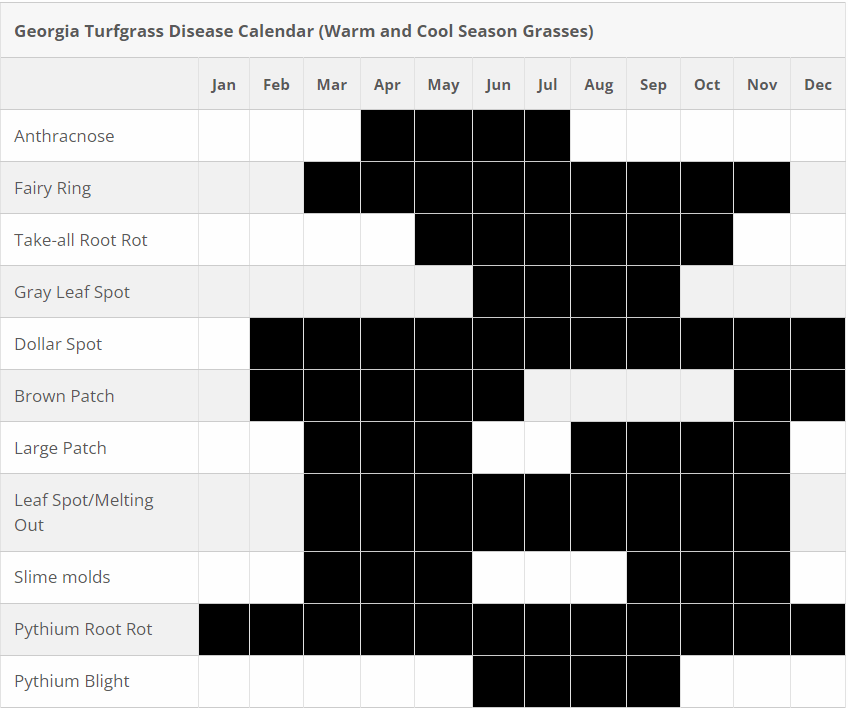
Contact a Lawn Fungus Control Professional
If you have questions about lawn fungus or need help treating your yard, contact Creech Landscape. We have the knowledge and experience to ensure your turf stays healthy and thriving all year long.

